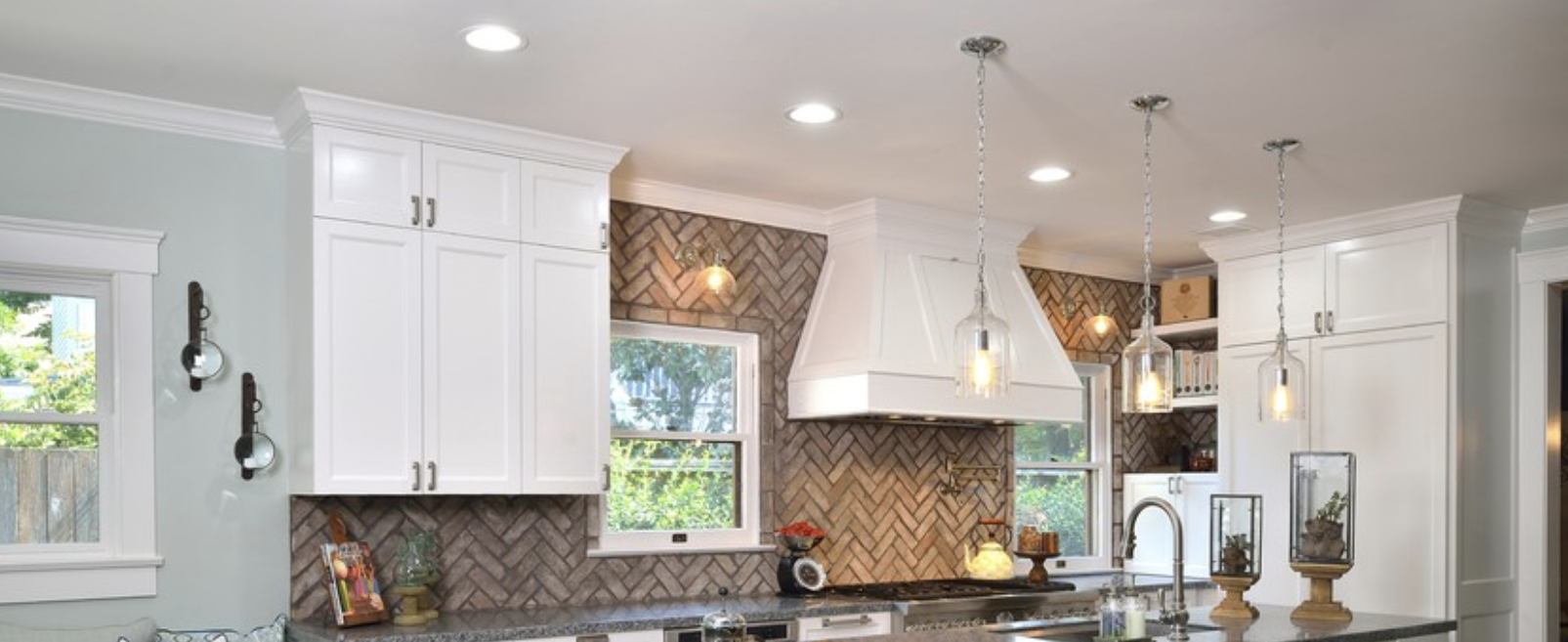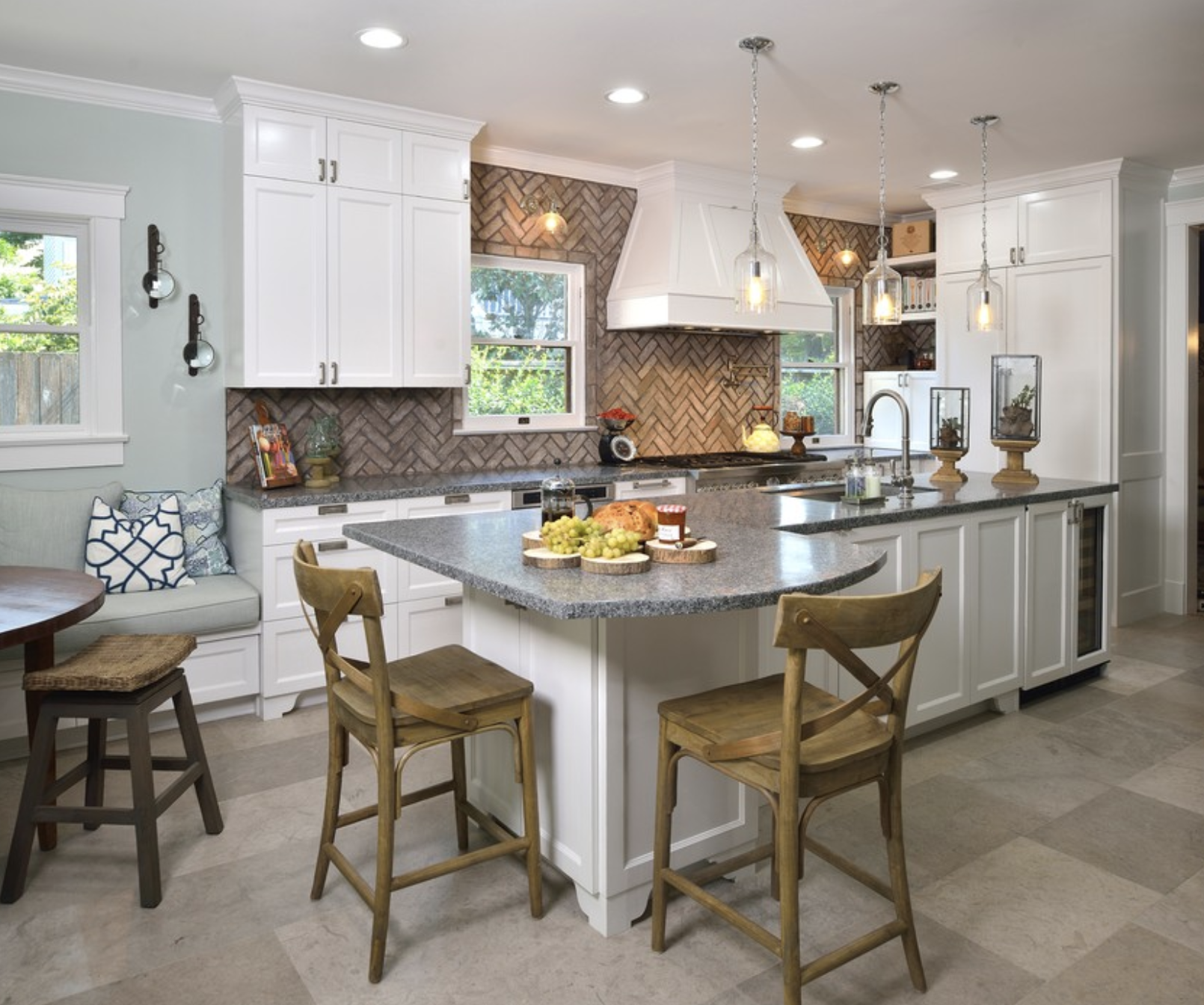Lighting Buying Guide: How to Choose the Right Lights for Every Spot in Your Home
Published February 5, 2018

Lighting is one of the most important design decisions you’ll make for your home on more levels than one. First and foremost, your lighting needs to serve a functional purpose, providing the right amount of illumination for the space it’s in. But practicality aside, lighting is a major design element, too. Light fixtures range from simple to statement-making, and choosing one end of the spectrum over the other can influence the look of an entire room.
To help you land the perfect happy medium between style and substance, we’ve put together a lighting buying guide that covers different types of lighting, styles, room guidelines, and more.
How to Choose the Right Lighting For Your Home.
Know the three types of lighting.
Before you set out to purchase lighting, it’s important to have a thorough understanding of your room’s lighting plan. A good lighting plan is typically composed of three types, or sources, of light per room: ambient light, task lighting, and accent lighting.

Ambient Lighting
Ambient lighting is the main source of lighting in a room, coming most often from overhead fixtures or recessed lighting. Ambient light serves the most basic purpose of illuminating the room. The amount of ambient lighting your room has is typically decided on by your home-builder or contractor, but if you’re planning a renovation or installing a new ceiling fixture, the measurement you’ll want to know is called “foot-candles.” The term foot-candle refers to how bright a light is one-foot away from the source. Utilitarian spaces, like kitchens and bathrooms, require more foot-candles than living and transition areas like family rooms, dining rooms, and hallways.
Here’s an overview of the recommended foot-candle requirements for common spots in the home:
- Kitchen sink, kitchen oven, and bathroom: 70-80 foot-candles
- Dining room and kitchen in general: 30-40 foot-candles
- Living room, family room, bedrooms, and hallways: 20 foot-candles
This measurement can then be translated into lumens or watts to help you decide how much light your room needs. To convert to lumens (the measure of brightness for LED bulbs), multiply the number of foot-candles recommended for the room by the square-footage of the area. So a 10 ft. x 12 ft. bedroom should have the equivalent of 2,400 lumens of light. Prefer incandescent bulbs to LED lights? Common lumen to watts conversions include:
- 450 lumens = 40W
- 800 lumens = 60W
- 1100 lumens = 75W
Task Lighting
Task lighting is designed to provide light for specific activities or uses in a space — like bedside sconces for nighttime reading, under-cabinet lighting to illuminate countertops, a gooseneck lamp on a desktop, or a vanity light above a mirror. Depending on your needs, you might opt for task lighting with swivel or rotating capabilities to direct the light where you need it most.
Accent Lighting
Accent lighting plays the most decorative role in your home. It’s typically used to draw attention to an architectural or decorative focal point, like a fireplace, work of art, staircase, or bookshelf. Accent lighting can also be a focal point in its own right if you opt for statement-making or embellished chandeliers, sconces or lamps.
Room-Specific Lighting Guidelines
Certain areas in a home require more specific lighting guidelines. Common areas that require special considerations include:
Kitchen Island Lighting

Whether you use your kitchen island for prep work, seating, storage, or all of the above, chances are you want to illuminate it with task lighting. The most common source is pendant lighting arranged in a row above the island.
To determine how many pendant lights you will need, start by measuring your island. You’ll want a minimum of two or three lights spaced 24”- 36” apart. (If you have an oversized kitchen and choose a larger pendant style you will also want to ensure that the distance between each light is larger than the diameter of the pendant itself). To hang an odd number of lights, install the first in the center of the island, and space the rest from there.
The height of the pendant off of the countertop is equally important: Leave too much space and you won’t get enough light, while not enough space can cause the pendants to obstruct the functionality of the island or the view of those working around it. For the best results, the bottom of the pendant light should sit 32”- 40” above the top of the island.
Entryway Lighting

The right light ensures a grand entrance.
In an atrium style-foyer that’s more than one level, large chandeliers or statement pendants often work well to both illuminate the space and make a style statement. In general, the bottom of the chandelier should be level with or higher than the second floor. In a single-story space, a chandelier should leave a minimum of seven feet of clearance between the fixture and the floor.
To find the right-sized pendant or chandelier for your space: add the length and width of your entryway together, then convert that measurement into inches. If you had a petite 6’ x 6’ breezeway, for example, you’d want a 12” wide fixture, while a sprawling 15’ x 18’ foyer would call for a fixture around 33” wide. (This equation actually works as a guideline for determining proper fixture size in any space!)
Dining Room Table Lighting

While the size of light fixtures in most spaces can be determined by the size of the room itself, in a dining room the light fixture should be proportionate to the dining table, too.
A good guideline: Choose a fixture that’s ⅔ – ¾ of the size of the table’s length (or diameter, if the table is round), and hang it so the bottom of the fixture sits 30” – 34” above the table.
Lighting Categories
Sconces
Sconces are mounted directly to the wall, and can be either hardwired or plugged-in to an electrical source. Wall sconces are commonly used in pairs — flanking bathroom mirrors, fireplaces and beds, for example. Swing-arm sconces, on the other hand, are more common solo, placed above artwork, bookcases, windows, and kitchen sinks.

From Left: World’s Away Delilah Sconce, Arteriors Sabine Sconce, Regina Andrew Sinuous Gold Metal Sconce
Flush mounts & semi-flush mounts
As their name implies, flush mount lights sit flush with the ceiling, maximizing headroom in spaces where it’s at a premium. Semi-flush mounts are a hybrid between a flush-mount and a pendant, often extending downwards six-to-twelve inches.

From Left: Uttermost Tesoro Semi-Flush Mount, Currey & Co. Worthing Flush Mount, Currey & Co. Wexford Flush Mount
Pendants
Pendant lights are suspended from the ceiling with a single cord, chain, or rod, and are often used as task lights, or grouped together above dining tables or kitchen islands. Pendants range in size from mini (around 6″-10″ in diameter) to oversized (36″ or more for drum pendants).

From Left: Robert Abbey Apollo Pendant, Currey & Co. Vitrine Pendant, Arteriors Mason Wide Pendant
Chandeliers
Like pendant lights, chandeliers are suspended from the ceiling, but unlike pendants, chandeliers have more than one light source, and often more than one suspension point. Chandeliers can be equal parts functional and decorative, and come in a wide-range of styles from classic candelabra, to sculptural, modern designs.

From Left: Cyan Design Motivo Chandelier, Jonathan Adler Vienna Chandelier, Currey & Co. Beach House Chandelier
Lamps
Floor lamps and table lamps make excellent task lights, and can substitute for ambient lighting in a room where it’s not already in the ceiling. The wide range of styles and easy mobility make them one of the most popular lighting categories.

From Left: Regina Andrew Scalloped Capiz Column Lamp, Pacific Coast 007 Table Lamp, Wildwood Lamps Moderno Lamp in Gold